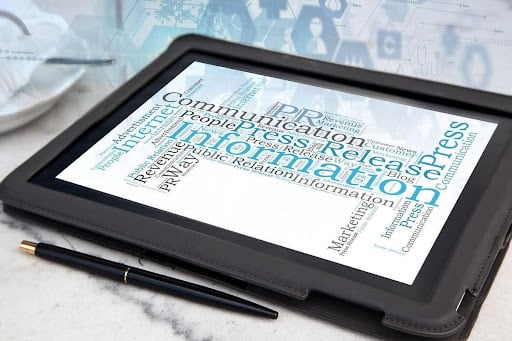
Talking so everyone can hear
We have heard the words “equity” and “inclusion” many times in recent months. But we may not all have connected them with our work as writers and editors in health, medicine, and science. How can medical communicators help create a more equitable, inclusive world?
As writers and editors, we can play a role in giving all people the opportunity to understand and use health information so that they can participate in clinical trials, understand their health care providers’ instructions, and take other actions that help reduce and eradicate social, economic, and health disparities.
April 26, 2021 at 2:00 PM




 As artificial intelligence (AI) transforms the digital landscape, medical writers and health communication professionals must adapt their content strategies to stay relevant in search engine optimization (SEO). AI-driven search algorithms are reshaping the way health care content is ranked and discovered online. In this evolving environment, content must be clear and concise while balancing the need for accuracy in health communication.
As artificial intelligence (AI) transforms the digital landscape, medical writers and health communication professionals must adapt their content strategies to stay relevant in search engine optimization (SEO). AI-driven search algorithms are reshaping the way health care content is ranked and discovered online. In this evolving environment, content must be clear and concise while balancing the need for accuracy in health communication.
 Millions of people log in to one or more social media sites every day, and patients and families are increasingly seeking health information online. This merging of digital media and health care realms makes it imperative that health care organizations, clinicians, researchers, and medical communicators engage with audiences on social media channels.
Millions of people log in to one or more social media sites every day, and patients and families are increasingly seeking health information online. This merging of digital media and health care realms makes it imperative that health care organizations, clinicians, researchers, and medical communicators engage with audiences on social media channels. 
 With so much digital content vying for our attention, medical communicators need to harness the power of visual communication. Otherwise, high-quality health care messaging could end up buried in a sea of social media reels and misleading posts.
With so much digital content vying for our attention, medical communicators need to harness the power of visual communication. Otherwise, high-quality health care messaging could end up buried in a sea of social media reels and misleading posts. 
 Health care or medical public relations (PR) is a growing niche for medical communicators that involves translating and sharing complex medical information with a general audience of patients and consumers.
Health care or medical public relations (PR) is a growing niche for medical communicators that involves translating and sharing complex medical information with a general audience of patients and consumers. 




 We do not live in a world where everyone — regardless of race, gender, gender identity, disability status, or income level — has the same access to high-quality health care, adequate housing, or nutrition. As a result, health outcomes are vastly unequal, causing marginalized populations to experience lower life expectancies and higher levels of preventable diseases.
We do not live in a world where everyone — regardless of race, gender, gender identity, disability status, or income level — has the same access to high-quality health care, adequate housing, or nutrition. As a result, health outcomes are vastly unequal, causing marginalized populations to experience lower life expectancies and higher levels of preventable diseases.
 We live in an increasingly globalized world, and the field of medical communication is no exception. In fact, most medical writers and editors are creating materials for a global scientific audience.
We live in an increasingly globalized world, and the field of medical communication is no exception. In fact, most medical writers and editors are creating materials for a global scientific audience.

 If patients and consumers don’t understand patient education materials — or don't know what action to take after reading or viewing them — those materials aren’t doing their job.
If patients and consumers don’t understand patient education materials — or don't know what action to take after reading or viewing them — those materials aren’t doing their job.
 By Charlotte Crowder, MPH, ELS, Freelance Medical Writer and Editor
By Charlotte Crowder, MPH, ELS, Freelance Medical Writer and Editor
 This blog is based on content presented by Kathi Whitman, MA, Senior Medical Writer/Project Manager, Intermountain Healthcare, at the AMWA Medical Writing & Communication Conference and published in AMWA Journal v 31 n 4.
This blog is based on content presented by Kathi Whitman, MA, Senior Medical Writer/Project Manager, Intermountain Healthcare, at the AMWA Medical Writing & Communication Conference and published in AMWA Journal v 31 n 4. 
 As a medical writer, chances are high that you’ve crafted a document or two without your byline attached. After all, much of the content medical writers create doesn’t require authorship. If you’re interested in
As a medical writer, chances are high that you’ve crafted a document or two without your byline attached. After all, much of the content medical writers create doesn’t require authorship. If you’re interested in 


 The
The
 Amid ongoing global health issues and a shifting economy, many experienced
Amid ongoing global health issues and a shifting economy, many experienced 
 To work in health communication, you need both detailed knowledge about health care and marketing and the ability to manage a variety of editorial and writing tasks.
To work in health communication, you need both detailed knowledge about health care and marketing and the ability to manage a variety of editorial and writing tasks.
 This article is based on content presented by
This article is based on content presented by 
 This article is based on content presented by
This article is based on content presented by 
 As medical writers, the heart of our work is to convey information to a specific audience. Writing for patients, we are trusted with interpreting highly technical information to educate, protect, enable, and empower our readers. The result of poor understanding can be directly harmful to health. However, successfully informing patients leads to better health outcomes, including more preventative care and
As medical writers, the heart of our work is to convey information to a specific audience. Writing for patients, we are trusted with interpreting highly technical information to educate, protect, enable, and empower our readers. The result of poor understanding can be directly harmful to health. However, successfully informing patients leads to better health outcomes, including more preventative care and 